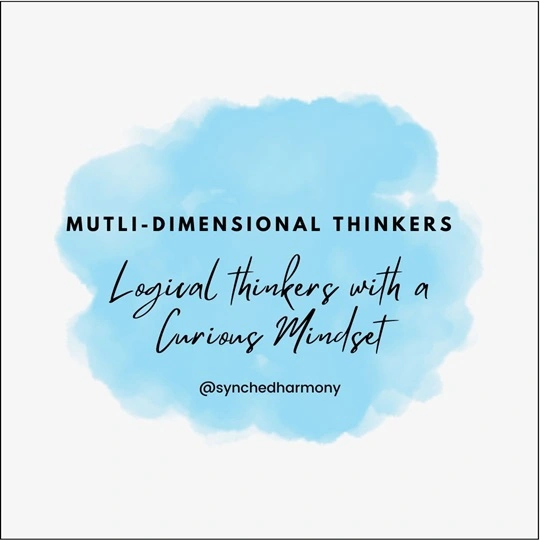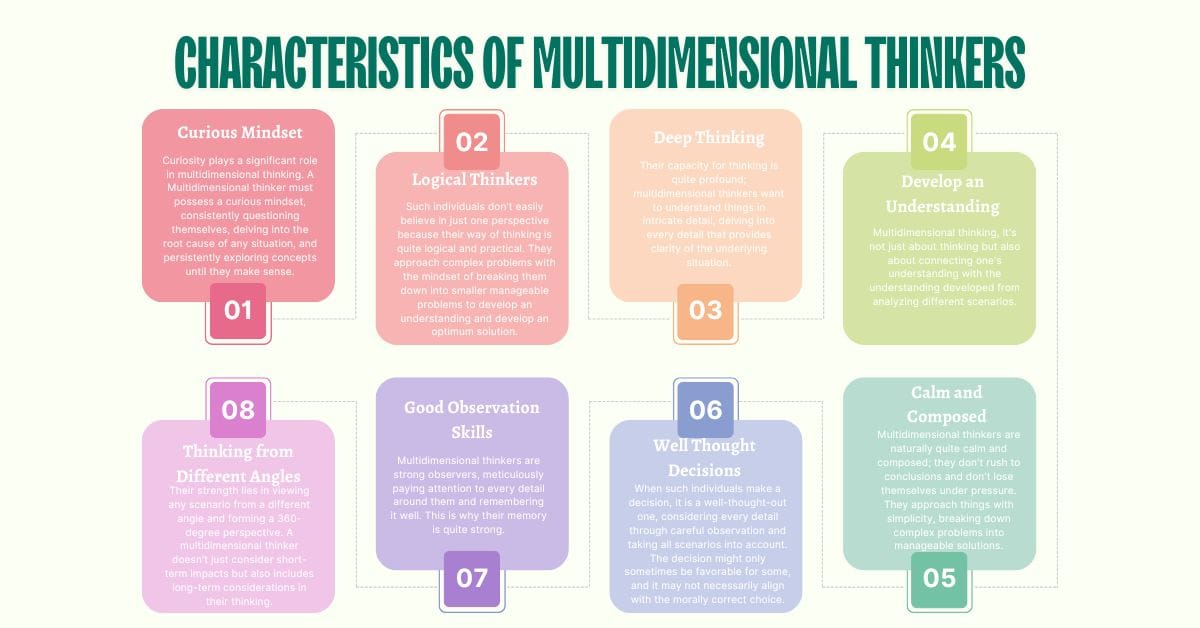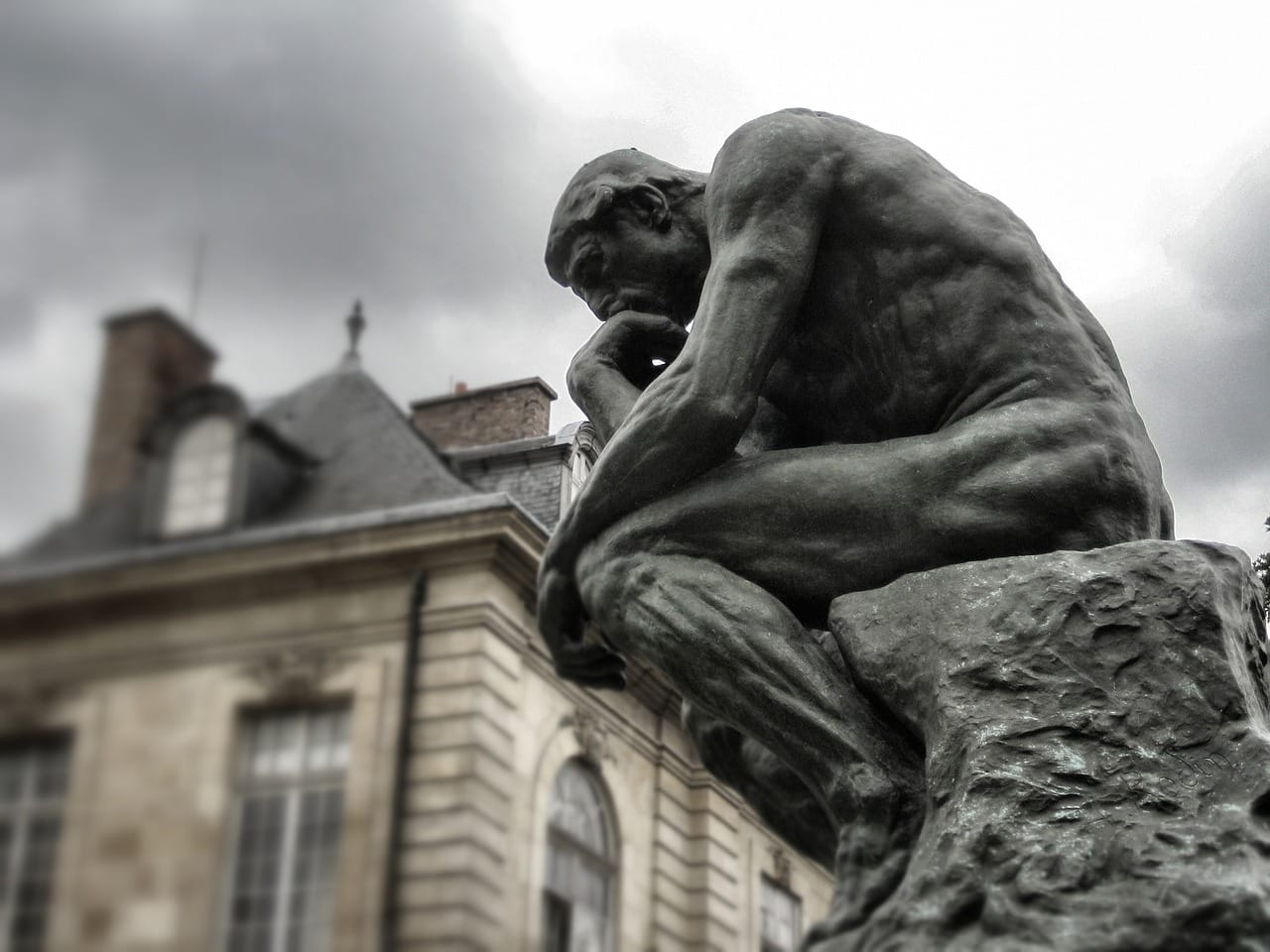We have discussed multidimensional thinking extensively in this blog, If you still need to read it in detail, you can read them through the links below. However, today we will explore some elite characteristics of multidimensional thinkers and understand how they utilize their ability of multidimensional thinking.
Must Read: Multidimensional Thinking – Learning Different Perspectives
We will delve into what it means to be a multidimensional thinker and how you can practice multidimensional thinking through your deep thinking ability. Later in the article, I will explain how to utilize multi-dimensional visualization for problems to resolve conflicts effectively.
What is a dimension?
Before we proceed, it’s essential to understand the concept of dimension that is used extensively in this article’s context. We’ve used this term numerous times, but what significance does it hold in the context of our discussion? To put it simply, the term dimension refers to the measurement of something in relation to certain aspects, such as height, width, length, and so on.
However, from the perspective of synched harmony, dimension takes on a different meaning. Here, the term is employed to measure the outcomes and impact of a situation that is imagined across multiple scenarios. The term multidimensional is used because you attempt to imagine the same situation in various dimensions that physically don’t exist, thereby measuring its consequences from various hypothetical angles.

Who is a Multidimensional Thinker?
A multidimensional thinker’s ability to think is not confined to a single perspective or dimension. They approach any situation from multiple angles, striving to comprehend each perspective thoroughly and gain a comprehensive understanding of different viewpoints.
Individuals with such a mindset tend to be highly creative, and they often excel as effective problem solvers because they consistently explore new and innovative approaches to solving problems. Their strong logical thinking skills come into play as they strive to logically connect various aspects of a problem, allowing them to draw meaningful inferences.
Characteristics of a Multidimensional Thinker

1. Curious Mindset
Curiosity plays a significant role for multidimensional thinkers. A Multidimensional thinker must possess a curious mindset, consistently questioning themselves, delving into the root cause of any situation, and persistently exploring concepts until they make sense. They maintain a curiosity to examine all potential scenarios, seeking the best possible alternatives and solutions in any given situation. Such individuals don’t quickly start believing one possible scenario but strive to understand the issue from every perspective.
As per studies conducted by Litman, J. A., & Spielberger, C. D. (2018) in their paper Curiosity and problem-solving efficiency: The role of intrinsic interest and cognitive exploration published in the Journal of Educational Psychology, Highly curious individuals display superior problem-solving skills because curiosity drives them to seek diverse and novel perspectives.
Quick Tip:
A great way to have a curious mindset is by asking questions – Why? Ask Why 5 times for each previous answer until you develop an understanding.
2. Logical Thinkers
Such individuals don’t easily believe in just one perspective because their way of thinking is quite logical and practical. They approach complex problems with the mindset of breaking them down into smaller manageable problems to develop an understanding and develop an optimum solution. Instead of focusing on the blame game and questioning who should be put at fault and why, A multidimensional thinker focuses on understanding why it happened in the first place and what can be done to resolve the issue.
Lai, E. R. (2020) conducted a study on Critical Thinking: A Literature Review in Pearson Research Reports named “Critical Thinking and Logical Reasoning in Complex Environments” (2020) and found that people who integrate logical reasoning into decision-making processes consistently outperform others in complex problem-solving scenarios.
3. Deep Thinking
Their capacity for thinking is quite profound; multidimensional thinkers want to understand things in intricate detail, delving into every detail that provides clarity of the underlying situation. Their curious minds don’t permit them to believe in one-sided perspectives; they continue to ponder on a particular matter until they completely understand it. They place more trust in their thoughts than in the opinions of others.
Also Read: 5 Surprising Advantages of Overthinking You Never Knew About
A study on “Cognitive Depth and the Resolution of Ambiguous Problems” (2019) by Sternberg found that deep thinkers excel in resolving ambiguous problems by engaging in higher-order analysis and forming unique connections. Sternberg, R. J. (2019). The role of cognitive depth in intellectual and practical problem solving. Cognitive Psychology Journal
4. Develop an Understanding
Multidimensional thinking, it’s not just about thinking but also about connecting one’s understanding with the understanding developed from analyzing different scenarios. Multidimensional Thinkers develop a holistic understanding of any situation, enabling them to analyze it from every angle and form a collective perspective of it.
A study on “Systems Thinking in Conflict Management” (2017) by Meadows et al found that systems thinking, a core aspect of multidimensional thinking, enables individuals to visualize problems from various angles, leading to more sustainable resolutions. Citation: Meadows, D. H., & Wright, D. (2017). Thinking in Systems: A Primer.
5. Thinking from Different Angles
Their strength lies in viewing any scenario from a different angle and forming a 360-degree perspective. A multidimensional thinker doesn’t just consider short-term impacts but also includes long-term considerations in their thinking. They focus not only on what seems right according to them but also consider aspects that may appear morally incorrect. Their thought process goes beyond finding a solution for the current problem; they contemplate how to eliminate the problem in a way that it doesn’t resurface in the future.
6. Good Observation Skills
Multidimensional thinkers are strong observers, meticulously paying attention to every detail around them and remembering it well. This is why their memory is quite strong. multidimensional thinkers are aware of what’s happening around them without revealing anything that they know unless necessary. Even after observing everything, they won’t hastily jump to a conclusion but will take the time to understand each detail and form their understanding.
A study on “Cross-Disciplinary Creativity and Knowledge Integration” (2018) by Amabile found that exposure to cross-disciplinary knowledge fosters multidimensional thinking and enhances innovative problem-solving abilities. Citation: Amabile, T. M. (2018). Cross-disciplinary insights in creative thinking. Creativity Research Journal.
7. Well Thought Decisions
When such individuals make a decision, it is a well-thought-out one, considering every detail through careful observation and taking all scenarios into account. The decision might only sometimes be favorable for some, and it may not necessarily align with the morally correct choice. However, by weighing all factors and considering all aspects, they choose the option representing the optimal solution.
8. Calm and Composed
Multidimensional thinkers are naturally quite calm and composed; they don’t rush to conclusions and don’t lose themselves under pressure. They approach things with simplicity, breaking down complex problems into manageable solutions. Handling pressure effectively, managing challenging situations, and bringing optimal solutions are their strengths.
9. Multidimensional Knowledge
Multidimensional thinkers don’t just accumulate vast knowledge but build a multidimensional understanding. Their knowledge isn’t confined to books or theoretical concepts but extends to a valuable level by contemplating situations from various angles. It becomes a unique experience that one can only gain by delving deep into the essence of something.
What does it mean by Multidimensional Knowledge?
Being knowledgeable is one thing, but having multi-dimensional knowledge is an entirely different aspect. You may have extensive knowledge in a particular subject, having achieved expertise in that field. However, possessing a comprehensive understanding of various perspectives on a subject is what is referred to as multidimensional knowledge. For a better understanding, let’s consider an example:
Imagine a judge in a courtroom. Years of practicing law make him a potential candidate for that position, but as a judge, he is bound by the statements and evidence presented by the lawyers. He makes decisions based on the proof presented. While he may not know what’s right or wrong; a lawyer fighting a court case, presents a picture created from different perspectives, allowing him to see the crime from various angles, differentiating between the guilty and the innocent.
A lawyer can be taken as a good example of a multidimensional thinker as they gather knowledge and evidence about a court case from various angles to the extent that goes beyond what’s immediately visible. Paying attention to scenarios that may not be apparent and conduct deep research on them to bring forth the truth.
Their job is not merely to prove or disprove someone guilty based on the party’s statements, but to form a holistic understanding of the case by considering every scenario from various angles. The picture presented to the judge not only relies on visible pieces of evidence but also attempts to bring forth aspects that others might not be able to see otherwise.
To do this, they utilize the 9 elite characteristics of multidimensional thinkers described above to expand their limited perspective and strengthen their knowledge of the underlying case. This allows them to understand and grasp those aspects that might be unrelated to the case, which may indirectly contribute to bringing the conclusion to the case.
In essence, knowledge is gained by reading books and artifacts, which can be acquired through reading. However, multi-dimensional knowledge is an experience gained by delving deep into everything, pushing one’s mind to places where someone else’s thoughts might not reach.
This experience is far superior to any knowledge found in books because books teach you methods, but experience teaches you skills. Therefore, if you want to progress in life, having multi-dimensional knowledge of your respective area is crucial. It becomes invaluable when the knowledge gained from books falls short.
How to Practice Multidimensional Thinking as a Multidimensional Thinker

Thinking from several lenses is a complex process, and it’s not something you can grasp in one go. It can take several days, and having a calm demeanor and a positive mindset are crucial aspects of it. You can approach Multidimensional thinking in various ways:
- Brainstorming: Brainstorming is a good way to trigger multidimensional thinking. However, it’s important to understand that you may not want to directly brainstorm ideas with those who are directly involved in the conflict. Instead, you should brainstorm with someone who has no involvement with the people involved in the conflict and who can provide unbiased opinions about the situation.
- Perspective Taking: Perspective-taking can also trigger multidimensional thinking where you first listen to the viewpoints of others and then consider them from different scenarios and perspectives that can help you gain a better understanding of the overall situation.
- Mind Mapping: With mind mapping, you visualize the situation in your mind and then try to fit all the scenarios in place accordingly. This allows you to think in various ways and helps you frame your perspective about that situation. Mind mapping is all about your thoughts, which can change after learning about the viewpoints of others.
- Scenario Analysis: Scenario analysis is about imagining different scenarios connected to the situation and then deeply contemplating each scenario to form your perspective on it. For instance, in a particular scenario, you think about what happened, why it happened, what triggered it, and what potential consequences could arise from it.
- Cross-disciplinary Insights: With the help of cross-disciplinary insights, you can utilize knowledge from other fields to foster multidimensional thinking. For instance, by learning about the psychology of human minds, you can approach problems with a new perspective where you will be in a better position to handle people’s mindsets and behavior.
- Expert Advice: Consulting with experts in the field or individuals with relevant experience can also help in gaining diverse perspectives. They can provide guidance that others might not be able to, and they can help focus your attention on aspects that you might not have thought of yourself.
- Time Dimension Analysis: In time dimension analysis, you attempt to understand how any problem or situation has evolved. Alongside, you try to comprehend when it originated first and how far it has escalated. This helps you recognize patterns that might have been observed beforehand which are of a repeating nature that could also be the potential root cause of the issue.
- Risk and Benefits Evaluation: In a risk vs. benefit analysis, you assess the potential risks and benefits of a decision before making it. It’s essential to thoroughly understand all aspects so that you’re aware of the associated benefits of the choice you’re about to make and the potential risks it entails.
Multidimensional Visualization for Conflict Resolution
To resolve any conflict, it is necessary to visualize it from a multidimensional perspective. Multidimensional visualization means attempting to visualize a conflict situation from every angle, thinking about every possible scenario related to it, and gathering meaningful insights that help in devising an optimal resolution strategy.
You can refer to it as mind mapping, where you visualize scenarios, connecting them logically with each other to enhance your understanding of conflicting situations. Doing this is quite beneficial in circumstances when you are forcibly drawn into a situation, and you have no idea about what happened.
Conflict resolution is also a skill where multidimensional thinking is crucial. You cannot resolve any sensitive issue without thoroughly investigating it. You have to reach the root of the problem and understand what happened, how it happened, in what sequence, and who was affected by this series of activities. You need to visualize all these aspects so that you can form your perspective on the overall situation.
Multidimensional visualization may involve thinking and analyzing all such scenarios that may not have occurred, but still, you have to assume what would happen if such events took place in a parallel universe and what corrective actions you would take in that case.
And, for this reason, such visualization isn’t possible just casually; it’s essential for you to be calm and composed. Additionally, being free from any form of distraction is necessary to engage in such deep-focus activities. It’s not that you always have to do this alone; with the help of the techniques mentioned above, you can multidimensionally visualize. If needed, you can also seek guidance from an expert.
Conclusion
To Conclude, Multidimensional thinkers are profound thinkers having a great ability to think deeply and consistently devise new and innovative ways to approach a problem. It is the distinct characteristics they possess that set them apart from the general populace. They are usually calm and composed and possess great logical thinking and observation skills that contribute to building their vast multi-dimensional knowledge base.
This knowledge base helps them visualize a problem multidimensionally thus enabling connecting the dots between different circumstances and serving the formation of a collective perspective derived from multiple inferences. If you like our content do share it with others and follow Synched Harmony Join our vibrant community for daily inspiration. Swipe-Up to follow for more related content.
